My cart
Your shopping cart is empty
You've probably heard of the Hope diamond - one of the most famous jewels in the world, which has captivated kings, aristocrats and celebrities for centuries with its bewitching beauty. The diamond has a rich history, shrouded in mystery, legends and myths of evil fate, yet it continues to fascinate with its deep blue color and captivating brilliance.
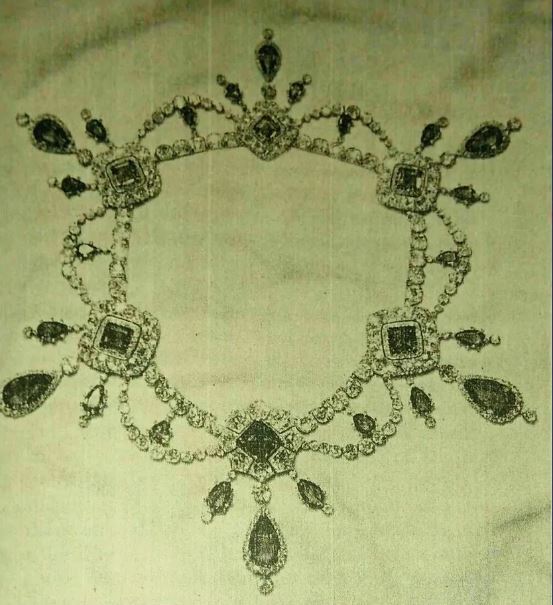
On July 1, 1878 an auction was supposedly held in Paris with the Queen of Spain's jewels, but the necklace was not part of it. It was, however, part of the list of jewels that Earl of Dudley William Ward I designated as heirlooms. Surprisingly, the list was compiled on June 12, 1878, i.e. less than a month before the auction took place, and according to historians, the necklace was sold to the earl secretly, before the official auction took place.
The jewels of the Earls and Countesses of Dudley are some of the most admired jewels in the world, although publicly available information about them is scarce. They have been an object of immense interest for centuries, not only because of their rich history involving importrant people and long journeys across different continents, but also because of the impressive size and quality of the green emeralds that make up a large part of their treasury.
The earliest photograph of the necklace dates back to 1903, where we see His Majesty Shivaji Rao Holkar XII, Maharaja of Indore wearing it as an accessory to his lavish attire:
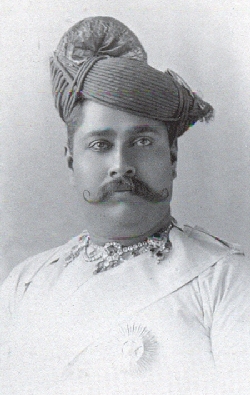
The emerald necklace later became property of Shivaji's successor Tukojirao III Holkar XIII. The portrait below is precisely of Tukojirao:
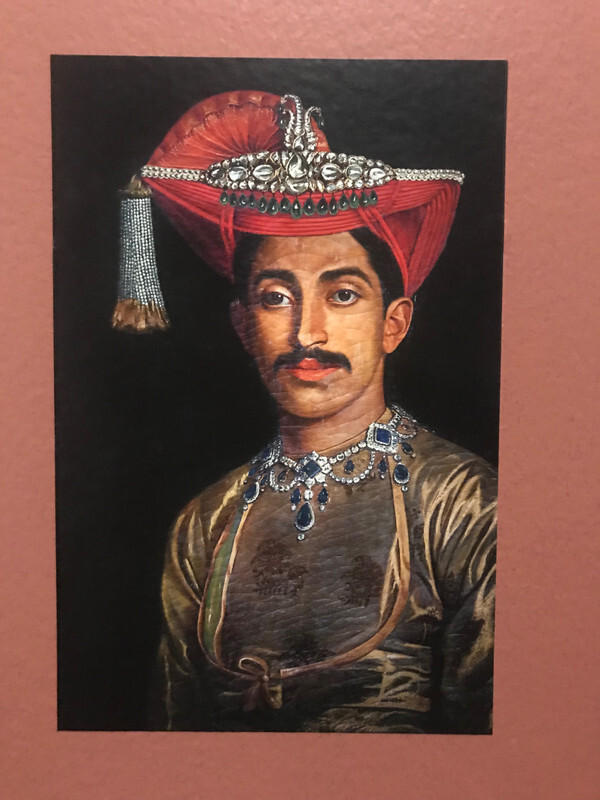
In this photograph from 1911 we see Shivaji's heir with the necklace again:
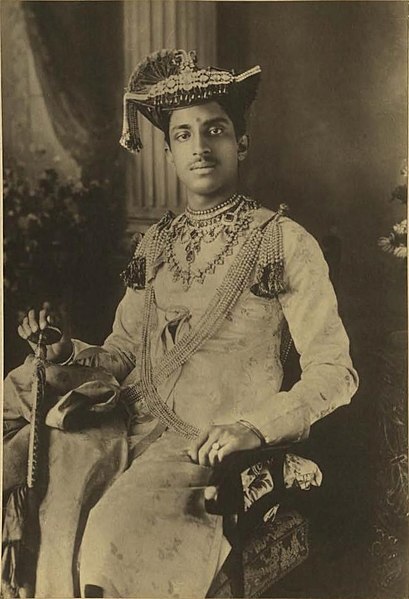
From the two pictures below, we understand that the necklace has changed hands again, being then in the possession of Yeshwant Rao II Holkar XIV, who was the crown prince of Tukojirao and was photographed with the necklace. The shot appears sometime during the 1920s, and it clearly shows the magnificence of the emerald stones:
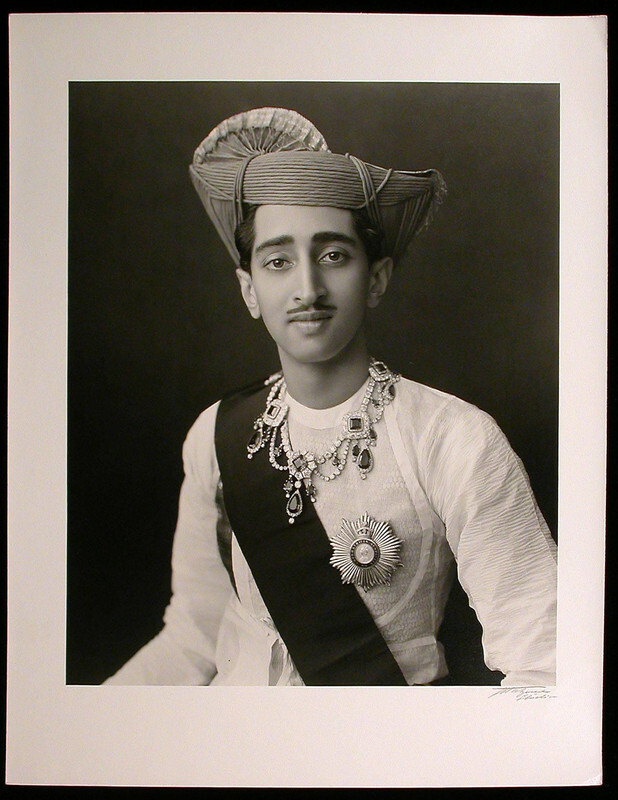
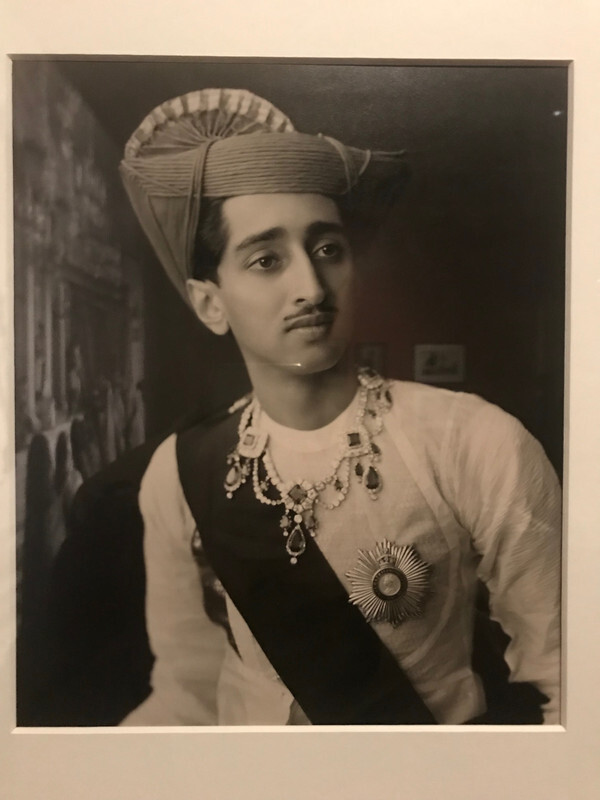
And in this not very popular photo, we see Tukojirao wearing the necklace again at his wedding with Nancy Ann Miller in Barwaha, which took place in 1928.
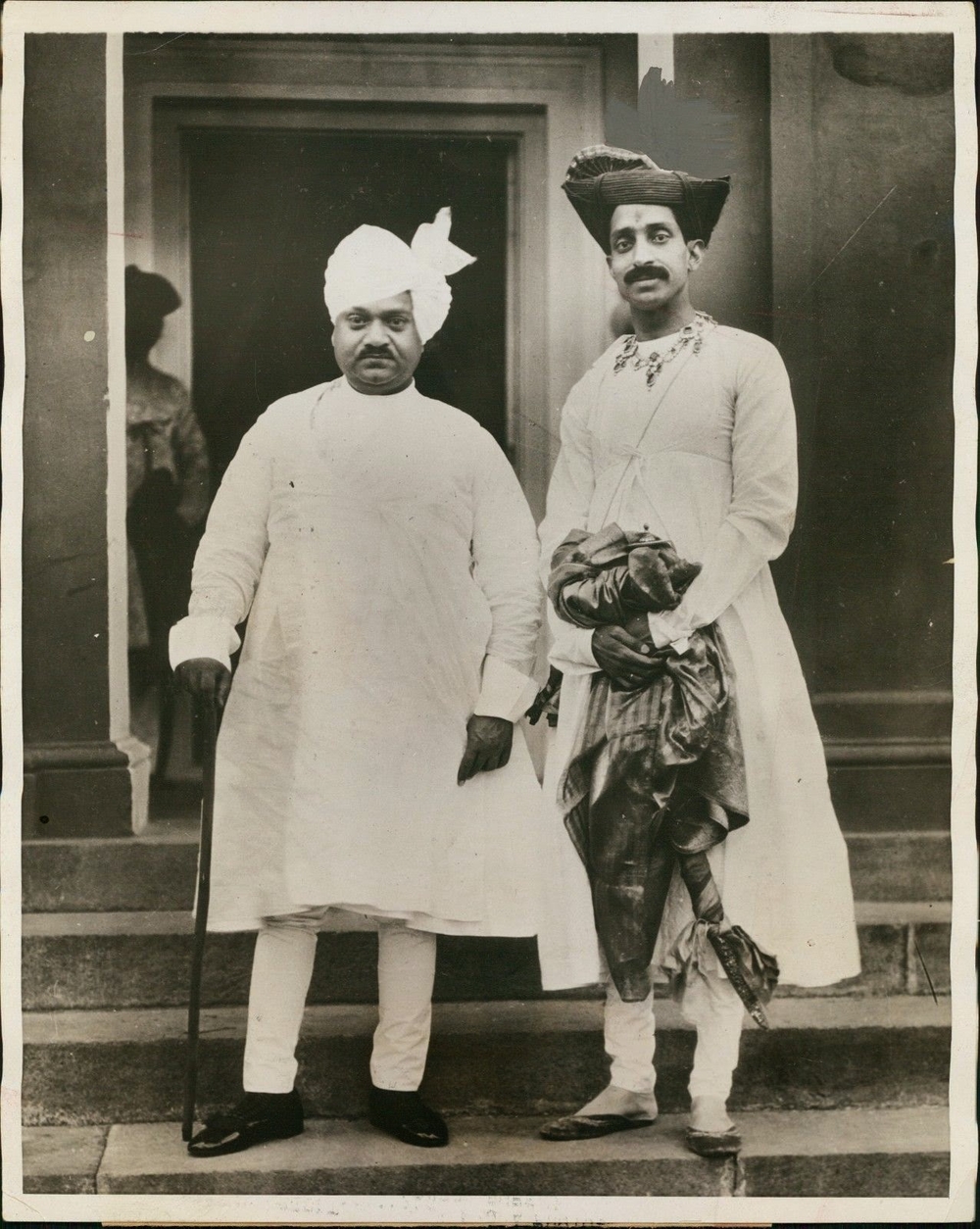
In the late 1940s, Yeshwant sold the necklace to the famous New York jeweler Harry Winston.
In a pamphlet written in November 1949, the necklace was said to include the finest deep green emerald specimens ever found, varying in size from large stones to tiny ones, linked and interlaced with brilliant round white diamonds. The combination of these precious stones represents a unique piece of art in the whole history of jewelry. A perfect emerald is an unusual find, rarer even than a perfect diamond, and Dudley's emeralds have no parallel in the world, the pamphlet said.
Because of the history of this necklace and the quality of the emeralds with which it was made, it is almost impossible to put a price on it. The stones amount to millions of dollars, but who can say what the value of the romance, hardships and emotions that accompanied it all these years is?
The pamphlet was written in order to raise funds for the treatment of infantile paralysis, and an exhibition of famous jewels was also organized as part of the campaign.
In 1950 the Dudley necklace, along with the Hope diamond and several other famous jewels, were put on public display by Harry Winston, with an advertisement for the event published in the St. Louis Post-Dispatch newspaper:

In this photo, however, we see the Dudley necklace and the Hope diamond together, worn by NYC model whose name remains unknown:
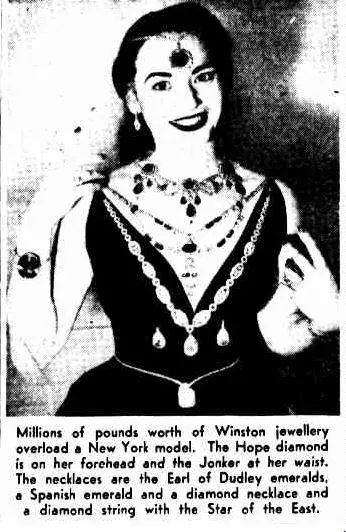
Winston donated the Hope Diamond to the Smithsonian National Museum in 1958, where it still remains to this day. Although he is a respected jeweler of world rank, he often destroys historical artifacts in order to use the encrusted gems to make entirely new jewelry (resetting), for which he is of course judged by historians. It is very likely that exactly such a fate befell the "Dudley" necklace, traces of which were lost soon after the exhibition in 1950.
Sources: